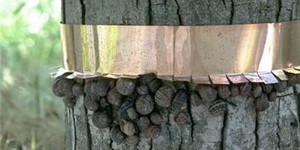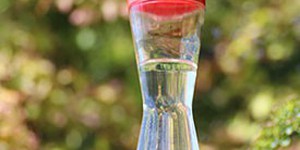Zoology Science Projects (51 results)
Animals have developed an amazing variety of body plans, behaviors, and strategies in order to succeed in the struggle for survival. Explore topics ranging from regeneration, camouflage, animal migration, how to attract hummingbirds, and more.
|
Select a resource
Sort by
|
A cricket as a thermometer? Yes, that is right! In this science fair project, you will investigate how the chirps of these tiny creatures can do more than lull you to sleep—they can tell you the temperature!
Read more
Featured
Have you heard that garlic powder is supposed to inhibit the growth of bacteria? Which do you think would make a better disinfectant: a solution of garlic powder or a solution of bleach? This project shows you a straightforward way to compare the effectiveness of different disinfectants (or other antimicrobial agents), by measuring zones of inhibition on a culture plate.
Read more
If you have a garden, you probably know about snails (or their shell-less relatives, slugs). You may even be looking for a good way to keep them from getting into your garden and eating up the results of all your hard work. In this science project, you will take a scientific look at one method of discouraging this garden pest.
Read more
Animals have different levels of activity depending upon their habitat, metabolism and behavior. Diurnal animals are more active during the day. Nocturnal animals are more active at night. Being diurnal or nocturnal may have different advantages for different animals. For example, desert animals tend to be nocturnal so they can stay cool and escape the desert heat present during the day. What types of diurnal and nocturnal animals are common in your area? You can set out a small trap to…
Read more
Animals come in all shapes and sizes, even humans. You can look up different statistics about different kinds of animals using the Internet: average body size, brain size, life expectancy and generation time are some examples. Is there a correlation between body size and life span? Is there a correlation between body size and brain size? Is there a correlation between body size and generation time? Is there a correlation between body size and the size of your footprint? (Comparative Mammalian…
Read more
One thing that all living things have in common is that they grow through cell division. How is this growth regulated? Sometimes growth occurs when it is not supposed to, leading to cancer. Scientists are trying to discover how growth is regulated, hoping to find potential cures for cancer. One idea is that cells keep track of growth using special regions of the chromosome called "telomeres" that count how many divisions a cell has made. If this is true, then growth, cell division and age are…
Read more
Worms are slimy, wiggly, and gross. But did you know that they have many unique abilities? One of the neatest things that worms can do is regenerate, or re-grow, parts of their body. After a piece of a worm is cut off, it can grow back with all of the necessary new parts. How much of a worm can you cut off and still get regeneration? Is one end of the worm better at regenerating than the other? See if you can make heads or tails of this wiggly problem!
Read more
Do you like to watch hummingbirds? Have you ever wondered why there is specialty hummingbird food? What is it about the food that makes it so appealing? In this zoology science fair project, you will observe these remarkable creatures and learn how color and sugar concentration influence a hummingbird's selection of a food source.
Read more
During metabolism, organisms experience physical and chemical changes. All animals need some way to exchange chemical waste generated during metabolism for fresh nutrients. One way that these metabolic chemicals are exchanged is during respiration, the process by which used carbon dioxide gas is exchanged with fresh oxygen and circulated throughout the body. How do organisms living underwater respirate? They use gills, which filter oxygen from the water and pass the oxygen into the…
Read more
Do you like skeletons? One of the more interesting jobs at a natural history museum is the creation and care of the skeletons and bones. How do the curators clean and put together the skeletons? Many curators use the carrion beetle, Dermestes vulpinus, to quickly clean off the dead animal tissue from a corpse to reveal the skeleton. These insects do such a good job that sometimes the skeleton remains intact! Another method is to slow cook the carcass until the meat falls off. You can use…
Read more
Baby Beluga may swim in the deep blue sea, but the song does not mention how cold it is out there! Find out in this science project how a bit of blubber can be a useful adaptation when the water is ice cold. Brrrr!
Read more
|
Explore Our Science Videos
Write Secret Messages With Invisible Ink!
Make a Model to Explore the Distance from the Planets to the Sun
DIY Mini Drone Part 7: Automatic Balancing







